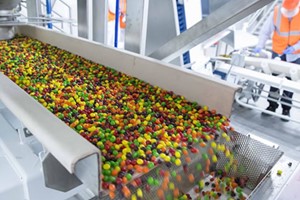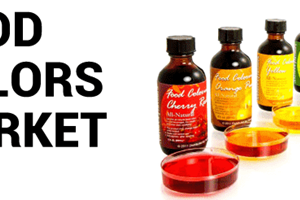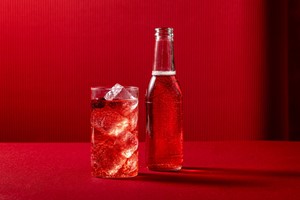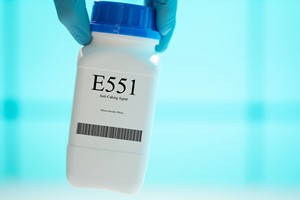Color is essential for processed food and beverages. Is does not only catch consumers’ eyes when they are browsing supermarket shelves. It is also a major indicator for a product’s quality, freshness and taste. To guarantee a mouth-watering look, adding color solutions is often indispensable. Firstly, production processes like boiling, freezing or pickling have an effect of the initial color of a product that needs to be masked. Similarly, colors are used to compensate changes in visual appeal that occur during storage. In regions like the GCC, climatic conditions are especially challenging for a product’s color stability. Thirdly, for certain products like confectionery or innovative color trends, the desired appeal could simply not be created without additional coloring. To meet all these requirements, a high-performance solution is required.
Three ways to bring color into play
Generally, there are three ways to color food and beverages. The first is artificial colorants. These are made synthetically through chemical processes. In small quantities they are not harmful and are approved by authorities. The second option is so-called natural colorants. They are made from materials like nettle or spinach, but also charcoal or cochineal insects. Here, pigments are extracted through the use of chemicals or solvents – of the natural source not much remains. You can recognize them by the E numbers used on the label.
But why not use what nature provides and color food with food? There is a third way that does not require any added chemicals: manufacturers like the Dutch company GNT offer food colors that only use fruit, vegetables and water. The production of these so-called Coloring Foods basically uses common household methods: the fruit and vegetables are chopped, pressed, boiled and filtered and concentrated. As they are foods, you can eat them throughout the production process. Their natural concentrates are applicable to all kinds of foods and beverages from hot drinks and cold iced tea, via confectionery, bakery products and dairy through to savory products like soups and meat. Being available as powders, micronized powders, liquids or oil-dispersible solutions in more than 400 shades, they fit the texture of any product and create every desired hue.
Naturalness is vital


When choosing the right color solutions, naturalness is a factor with increasing importance, as consumers look more and more for natural, healthy food as the top trends for 2018 by research institute Innova Market Insights support. When looking further into this demand, research has shown that artificial colorants are incompatible with consumer expectations, because they reject their synthetic production. So-called natural colorants are also viewed with growing skepticism, both because of the use of chemical solvents and of non-edible raw materials. Consumers worldwide expect natural food colorings to only originate from edible foods such as fruit and vegetables. Beyond that, legislation in the GCC region puts manufacturers under pressure.
According to regulation standard GSO 2500/2015, products containing the synthetic colors Allura Red AC (E129), Sunset Yellow (E110), Azorubine (E122) or Tartrazine (E102) have to carry the warning statement “this material may have an adverse effect on activity and attention in children”. Such a warning has the potential to scare off customers and deter them from buying a product. Being made exclusively from food in a truly natural way, Coloring Foods can simply be labelled by the fruit or vegetable that is used. Warning statements, E numbers and the like are not required. Instead, wordings such as “Coloring Food (carrot, elderberry)” or “concentrate from carrot and elderberry” can be used which are easy to understand and show at first sight that a product meets all expectations on naturalness.
Front of pack claims can increase brand preference
A study conducted by GNT found that communicating the use of Coloring Foods can even have a positive influence on the brand preference. Front-of-pack labels stating “with natural colors” or “colored with fruit and vegetables” both convey positive product characteristics such as “is healthy”, “is safe” or “is 100 percent naturally produced” to the majority of consumers. On top of that, the brand preference for a particular product can rise by up to 32 percent when using “colored with fruit and vegetables” as claim – depending on the category. The potential of this front-of-pack statement is particularly strong in Asia, where the vast majority of consumers are highly concerned about natural products. It becomes clear that Coloring Foods are an ideal tool to pave the way for future success.


Best quality through full supply chain control
When applying Exberry® Coloring Foods, manufacturers can rely on excellent quality in terms of performance, stability, brilliance and shelf-life. A full vertical integration of the supply chain is key to this. For the production of EXBERRY every step from field to fork is monitored. By growing raw materials that are optimized for color content, a very high yield of color is achieved. Therefore, the brand has been working closely with contract farmers for years. They only grow those varieties that have been proven in in-house test series. Harvesting is done at peak ripeness – when the color of the respective fruit, vegetable and plant has developed to its optimum level. The entire process is controlled and monitored on site by agricultural engineers who regularly perform extensive quality checks.
During the “fresh campaign”, which takes place from August to January, the Exberry® fields and plants are abuzz with activity. This is because the fresh materials must be processed within 24 hours of harvest to prevent color deterioration. The production itself can be compared to common household methods. Raw materials are chopped, pressed, boiled and filtered. Thanks to the absence of chemicals, the color intensive concentrates can be consumed in every phase of the production process without any concerns whatsoever. Throughout the rest of the year frozen and dried raw materials are processed.
To ensure year-round-availability independent from season and crop yield at an optimal price, a two-step production process has been developed. In a first step, they are manufactured into semi-finished concentrates that are always in stock. When ordered, these are turned into the final concentrates in a second step. The concentrates are mixed into formulations that are precisely tailored to the individual needs of customers. Application experts assist in the product development process of their clients and, whenever necessary, offer customized solutions. Given the importance of color for food and beverages and the growing demand for natural solutions, manufacturers need to react and replace artificial colorants. With vegetable and plant concentrates for coloring purposes, manufacturers can leave additive colorants behind, without having to make any compromises on quality.














